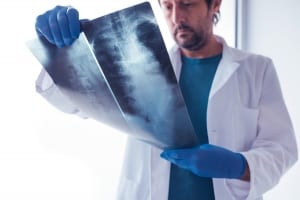Herzliya Medical Center
Tel: +972-9-959-4888
09:00-18:00
 Comprehensive spinal stenosis treatment or spinal canal stenosis at Herzliya Medical Center in Israel incorporates precise diagnosis and innovative surgical techniques to avoid compression of the spinal cord and spinal nerves. Experts in the Orthopedics Department at HMC in Israel have developed a unique post-operative rehabilitation process to accelerate restorative function and eliminate neurological symptoms.
Comprehensive spinal stenosis treatment or spinal canal stenosis at Herzliya Medical Center in Israel incorporates precise diagnosis and innovative surgical techniques to avoid compression of the spinal cord and spinal nerves. Experts in the Orthopedics Department at HMC in Israel have developed a unique post-operative rehabilitation process to accelerate restorative function and eliminate neurological symptoms.
Degenerative disc disease is a term that describes the process of degeneration of the intervertebral discs over time, which is usually age-related – spinal stenosis can lead to this.
Spinal stenosis describes any narrowing of the central canal of the spinal cord, minimizing side pockets or holes among spinal nerves. The main cause of spinal stenosis is a herniated disc – inhibiting damage to the integrity of the fibrous capsule, resulting in a protrusion from pressure on the neural structures and blood vessels of the spine.
Spinal stenosis indicates the shifting of the cartilage and bone structures of the spine, which may be caused by:
General symptoms include:
Spinal stenosis symptoms vary based upon localization of the disease to mainly two areas:
Over 70% of spinal stenosis cases occur in the lumbar spine (lower back), causing pain in the back of the leg. Spinal stenosis may be accompanied by severe malnutrition of the skeletal muscle, which worsening impairments and significantly limits mobility, threatening permanent disability. For men, the disease often causes erectile dysfunction.
Spinal stenosis is typically discovered when patients report having pain, have a clinical history of spinal stenosis, and/or observed through physical examination by orthopedic and neurological diagnostics. Screening methods include spinal X-ray, as well as computer (CT) and magnetic resonance imaging (MRI). Differential diagnosis of peripheral nerve supply is carried out by measuring the conductivity of the neuromuscular impulse through electromyography (EMG). All diagnostics are conducted in the department of functional and visual diagnostics at HMC in Israel.
Conservative treatments for spinal stenosis are aimed at reducing pain. Patients often experience significant improvement after taking epidural steroids to reduce swelling and pressure of soft tissues on the nerves and dura mater. Additional relief is achieved through physiotherapy. Systemic analgesics also facilitate therapeutic effects. Unfortunately, conservative treatment is only temporary – unable to completely eliminate spinal compression. Therefore, these methods cannot completely free the patient of the risk of disease recurrence.
As symptoms progress, research evidence indicates for patients suffering from pronounced pressure to undergo surgical treatment. The Department of Neurosurgery at HMC in Israel provides patients with several treatment options to remedy spinal compression in Israel. Procedures include:
Microsurgical and minimally invasive treatments to correct herniated disc is possible while preserving the integrity of the fibrous capsule
Neurosurgeons at HMC in Israel carefully explain spinal stenosis treatment options, providing detailed characteristics of each available procedure. Doctors allow patients the choice among highly efficient and safe procedures available.
The maximum recovery period after spinal stenosis treatment varies upon the use of modern technology by neurosurgeons and the approach taken during the postoperative period. The team of physiotherapists at Herzliya Medical Center use highly effective techniques to reduce pain, rehabilitate motor and sensory function, and minimize thrombotic and thromboembolic complication. All patients who undergo spinal stenosis treatment are provided with detailed instruction for ongoing treatment and outpatient follow-up care.